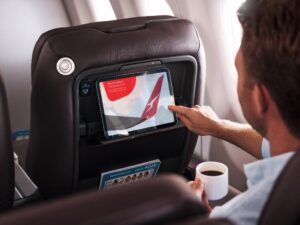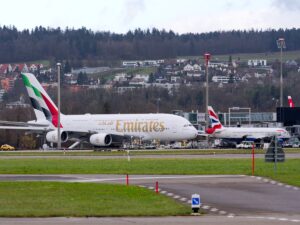
If you’re an avid Australian Frequent Flyer reader, you probably already know that redeeming frequent flyer points for gift cards is poor value. “Tell me something I don’t already know,” I can hear you yelling at me through your screen!
Indeed, gift vouchers are typically one of the worst value redemptions in any frequent flyer program. You can usually get significantly better value when spending points on reward flights or upgrades.
As an example, each Qantas point gets you around 0.46 cents of value when redeeming for a Woolworths gift card. But you could get around 2.7 cents per point on a Business Class reward flight from Sydney to Brisbane.
That’s not the point of this article.
Contents
Different airlines offer different gift card redemption values
We recently calculated the average value you would get per point or mile when redeeming for gift cards in a range of different frequent flyer programs. We then converted these values into Australian currency, to get a “cents per point” redemption value for each program.
One of the reasons why gift card redemption values matter is that these are the closest rewards to cash. In a way, gift card redemptions effectively provide a “price floor”, or a minimum value, at which members can redeem their points at any time. Gift cards aren’t subject to limited availability. At any time, you can simply “cash out” as many points as you want for gift cards.
Qantas & Velocity gift card redemption values
For example, a $50 Everyday WISH (Woolworths Group) gift card would cost you 10,950 Qantas points. That means you’d be getting around 0.46 cents per point in value by spending your Qantas points on this product.

You’d get slightly better value with Velocity Frequent Flyer, where 21,463 Velocity points nets you a $100 Coles gift card. That’s a value of 0.47 cents per point.
Notably, Velocity only offers Coles gift cards in $100 denominations. (With Qantas Frequent Flyer, you can redeem for a WISH gift card worth as little as $25.) This could be a deliberate move by Velocity to make it harder to “cash out” small amounts of points. Or perhaps to encourage members to redeem for other gift cards where Velocity makes higher margins.

So, how do these values compare to overseas frequent flyer programs?
Comparing gift card redemption values with other airlines
As you can see from the chart below, most other frequent flyer programs that offer gift card redemptions provide better value, based on a “cents per point” valuation, than Qantas and Velocity:

Of the programs we looked at, only United MileagePlus offered slightly worse value. All of the other programs offer significantly better value.
Admittedly, some frequent flyer programs do not offer gift card redemptions at all – so we weren’t able to compare these.
On one hand, it’s nice that some airline loyalty programs have kept their focus on travel rewards.
On the other hand, one could argue that more ways to use points is better for members as it gives them more choices. Not everyone necessarily wants to fly. Giving more lifestyle redemption options could leave more reward seats available on flights for those who do.
Why do most overseas programs give better value?
At the end of the day, redemption rates are a commercial decision for every loyalty program. As I’m not privy to the internal discussions within Qantas and Velocity, I can only really speculate as to why both of Australia’s main loyalty programs have opted to make such high margins on these redemptions.
One reason could be that one Australian Dollar is worth comparatively less than one US Dollar, Euro, British Pound, Singapore Dollar, and so on, which are the base currencies used by many overseas frequent flyer programs. If you’re earning one point per Australian dollar on a Qantas credit card, for example, that inherently means you’re earning more points than on a British credit card earning one point per British Pound spent. So it makes sense that the Australian points would also be worth relatively less.
That said, it could simply be that Qantas and Velocity offer worse value on gift cards than their overseas counterparts because they can. Why would they reduce their margins if they don’t have to?
Neither program likely cares that much if overseas programs offer better value, as most Australians only use Qantas and Velocity. And they are unlikely to switch just because of this, as it’s so much easier to earn Qantas and Velocity points within Australia.
It is noteworthy that both Qantas and Velocity offer very similar value on gift cards. I would guess that Qantas has set the price, and Velocity has simply matched (well, slightly beat) the value offered by its larger competitor. Velocity probably feels it doesn’t need to do any more than that.
A generous interpretation could be that Australia’s frequent flyer programs want to discourage members from redeeming their points for gift cards. But I don’t think that’s the case, based on the amount of emails I receive from both Qantas and Velocity encouraging me to spend my points on exactly this…

For what it’s worth, the fact that both programs regularly offer discounts on gift card redemptions also likely reflects the high margins they’re making on these…
What do you think? You can share your thoughts on the AFF forum…
















































































Community Comments
Loading new replies...
Join the full discussion at the Australian Frequent Flyer →